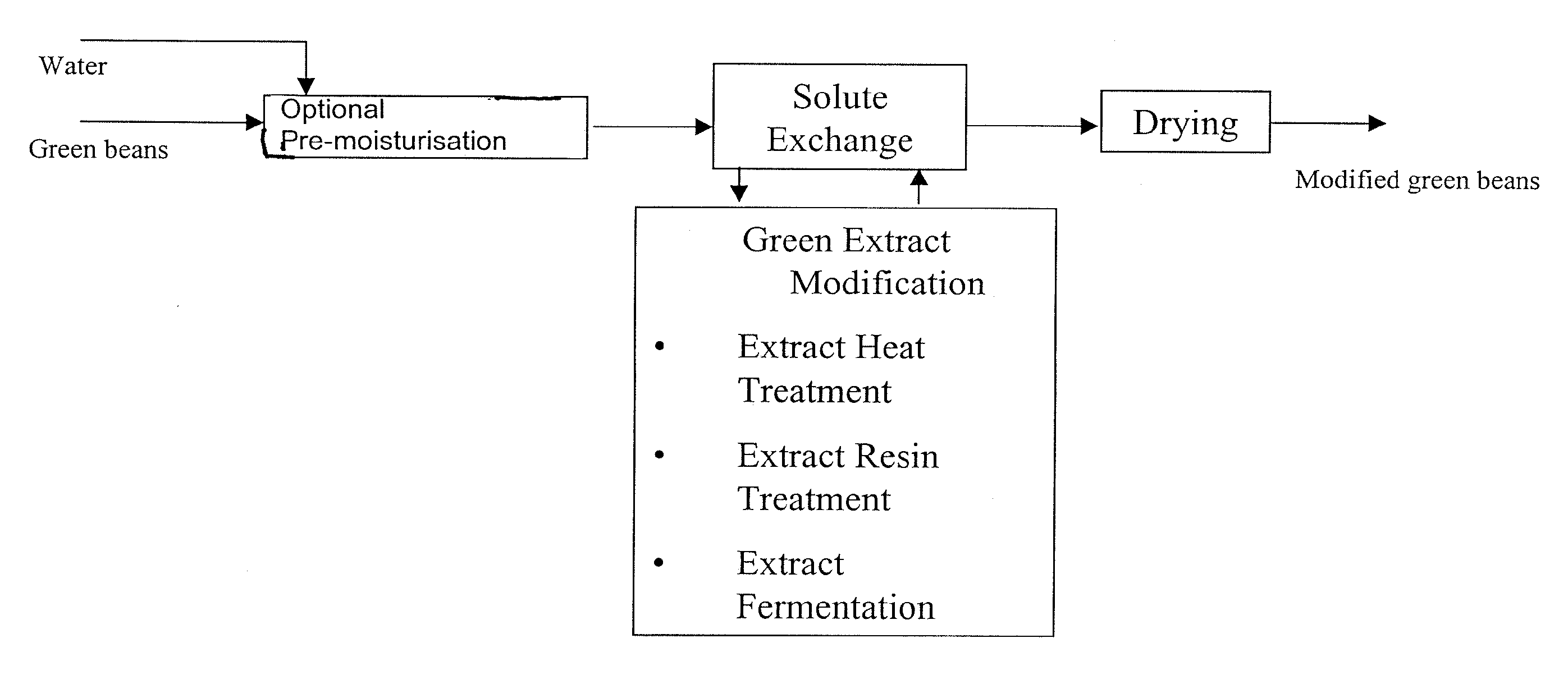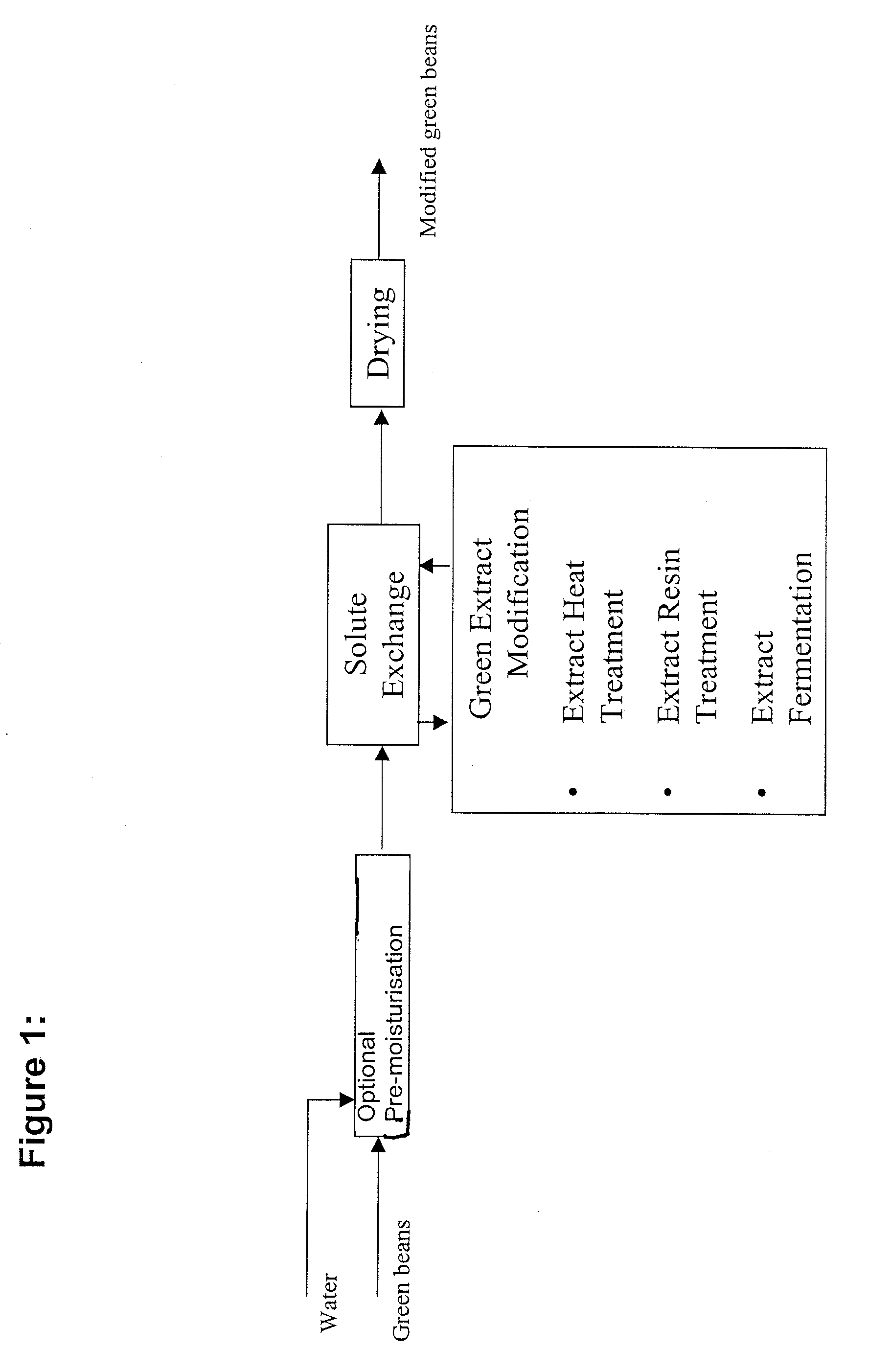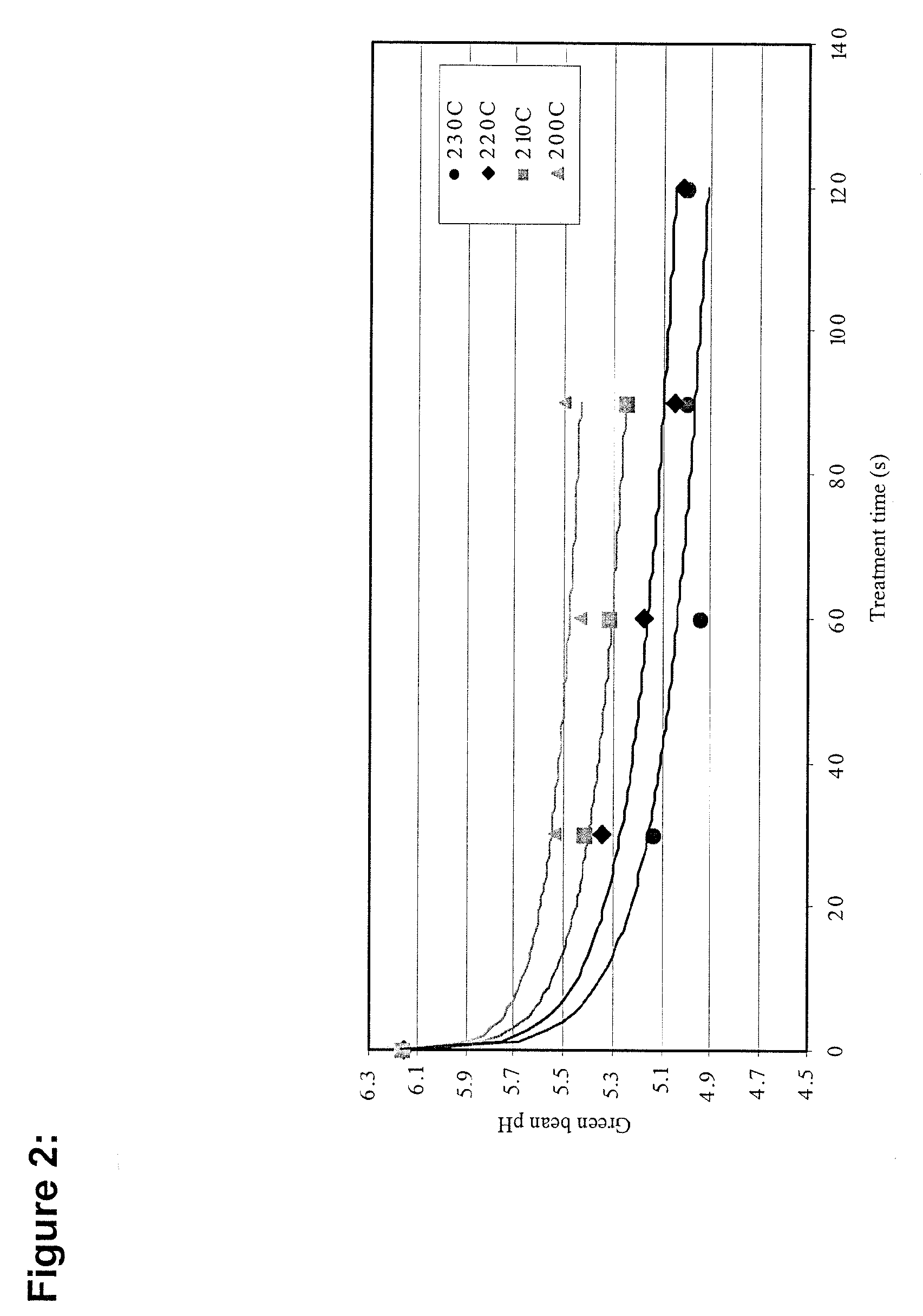Coffee flavour modification process
a technology of coffee and flavour, applied in the field of coffee flavour modification process, can solve the problems of limited use of steamed coffee, and achieve the effect of improving the flavour of roasted robusta
- Summary
- Abstract
- Description
- Claims
- Application Information
AI Technical Summary
Benefits of technology
Problems solved by technology
Method used
Image
Examples
example 1
Green Extract Heat Treatment of Robusta Coffee
[0086]For flavour modification of Robusta coffee, saturated green extract is treated at between 190° and 230° C. for between 30 and 120 sec. FIG. 2 shows the effect of heat treatment on green bean pH. In this example, 10 l of saturated green coffee extract were placed in a 40 I jacketed pressure vessel. The pressure vessel was sealed and the contents were heated to various temperatures by direct injection of extra high pressure steam at 32 bar pressure. The temperature of the extract was controlled by varying the pressure in the vessel. The extract was held at the desired temperature for between 30 and 120 sec. and then re-infused to the extracted green coffee beans.
[0087]The pH of the green coffee is reduced by between 0.5 and 1.1 units. This reduction in green bean pH is driven by the hydrolysis of sugars (sucrose, glucose and fructose) and chlorogenic acids to yield small aliphatic organic acids, most notably lactic and acetic acid. T...
example 2
Green Extract Heat Treatment of Arabica (Brazil or Columbian) Coffee
[0091]For flavour modification of Arabica coffee, saturated green extract is treated at between 190° and 220° C. for between 30 and 120 sec., and as described in the example above. FIG. 3 shows the effect of heat treatment on green bean pH. In this example, 10 l of saturated green coffee extract were placed in a 40 l jacketed pressure vessel. The pressure vessel was sealed and the contents were heated to various temperatures by direct injection of extra high pressure steam at 32 bar pressure. The temperature of the extract was controlled by varying the pressure in the vessel. The extract was held at the desired temperature for between 30 and 120 sec. and then re-infused to the extracted green coffee beans.
[0092]The pH of the green coffee is reduced by between 0.5 and 1.4 units. This reduction in green bean pH is driven by the hydrolysis of sugars (sucrose, glucose and fructose) and chlorogenic acids to yield small a...
example 3
Green Extract Resin Treatment of Robusta Coffee
[0095]For flavour modification of Robusta coffee, polyvinylpolypyrrolidone (PVPP) resin can be used to remove the compounds coumaryltryptophan (CoT) und caffeoyltryptophan (CaT). These compounds are precursors of 3-methyl indole (skatol), which is a causative agent of the musty note of Robusta coffee. Saturated green extract is treated with the resin as a slurry at a ratio of 5% PVPP solids to volume of saturated extract, at room temperature (23° C.). The resin-extract mix is agitated for 20 min, after which it is filtered to remove the spent resin. The resin treatment is repeated twice, after which the clarified extract is reduced in CoT and CaT content by around 80%, from 2.39 to 0.45 g / kg and 0.44 to 0.09 g / kg for CaT and CoT respectively (FIGS. 4 and 5). Green coffee is then treated with the modified extract. On roasting, the coffee produced from the treated beans is reduced in 3-methyl indole content by about 80%. The coffee brews ...
PUM
 Login to View More
Login to View More Abstract
Description
Claims
Application Information
 Login to View More
Login to View More - R&D
- Intellectual Property
- Life Sciences
- Materials
- Tech Scout
- Unparalleled Data Quality
- Higher Quality Content
- 60% Fewer Hallucinations
Browse by: Latest US Patents, China's latest patents, Technical Efficacy Thesaurus, Application Domain, Technology Topic, Popular Technical Reports.
© 2025 PatSnap. All rights reserved.Legal|Privacy policy|Modern Slavery Act Transparency Statement|Sitemap|About US| Contact US: help@patsnap.com



